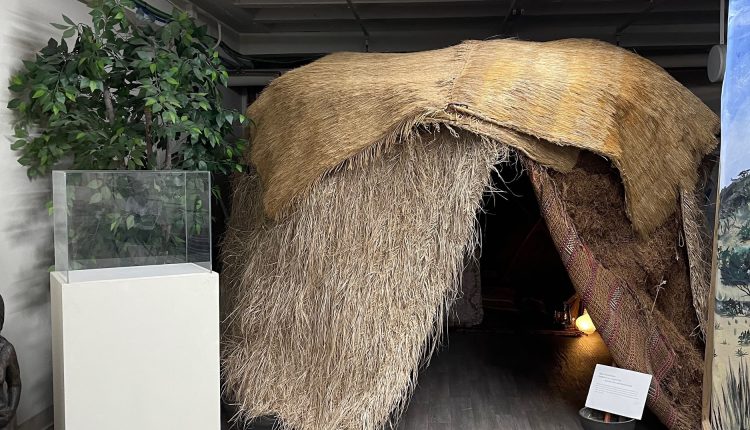Abdi Mohamud
Osman Ali, a Somali restaurateur, in Minneapolis started collecting Somali artefact items and storing them in the basement of his restaurant. It is unknown to us when he started his collection but it could be some time in the early 2000s. It could be argued that Osman’s intention was to beautify his restaurant and create a welcoming space for his patrons at the time. Over time, the collection grew and the space became too small. More people also showed interest in viewing items on display day after day. Osman had to find solutions now. He decided to find a bigger space to house the collection to meet the needs of those interested in Somali culture and history. Then, the Minneapolis Somali Museums was born with Osman Ali being its founder and director. In the museum’s website, it is stated that the museum was founded in 2011 and opened its doors to the public in 2014.
I visited the museum in July 2022 for the first time. It was July 1st, a nice sunny day when lots of Somali American were on the streets. Celebrations of Somali independence day were going on. It was early afternoon when we (four other family members accompanied me on the trip) reached the building of the Somali museum. Museum doors were open but we could see no one when we stepped in. Then, we said hello to get someone’s attention and to alert whoever might happen to be at work. A young lady emerged behind a closed door, who greeted and welcomed us warmly. After a little chat, we told her that we wanted to tour the museums. She informed us that the entrance fee was $11 per person. I gave her a payment car and she went back to her office to process the payment. Few minutes later, she came back to us with the card and a payment receipt. Then, we started touring the museums. There were three rooms. An anteroom leading to a more spacious room and a closed one, inaccessible to the public, which may be utilized as an office and for other purposes. The two rooms were full of stuff, different in size, shape and color. All the walls were covered. Lighter items were hung on the walls while the heavier ones were on the floor. Most of the items were associated with pastoral nomadic lifestyle in Somalia. Woven milk and water containers, wooden spoons, mats, animal hides and skins, troughs and many, many other things were on display. Traditional Somali home was erected on the floor, which we entered to see what was inside. Beautiful, hand-woven mats with different colours and patterns were spread out on the floor while some decorative things were on the walls. The popular, gorgeous, colorful ilindi garments were also part of the collections. One piece was pinned to the wall and a figure draped with a long piece sat on the floor. There were also pieces of garments, some from the past and others still popular in the Somali society such as hijab, abaya and so on.
Also on display were memorabilia representing Somalia’s independence struggle against European colonizers. Weaponry used and images of Dervish fighters, who waged war against the British and Italian in the first two decades of the 20th century were some of the attractions that appealed to us. Some decades later following the Dervish defeat by the British, 13 young men founded an organization called Somali Youth League (SYL) which led the nation to independence in 1960. SYL stories and images plus those of all presidents the nation had since independence were also in the exhibition. Plenty of things were there and anyone who visits the museum will be amazed and satisfied.
The young lady who attended to us was very professional and knowledgeable about Somali culture and history. She was patient with us and answered all our questions in detail.We spent about an hour in the museums. So we chatted with the attendant and asked her a few questions about the museum. She told us that the collections amounted to 1000 pieces but only 300 pieces were on display. The rest were in storage due to shortage of space. We also noticed that the museum was understaffed and that there was a need to have more than one person working in the museum at any given time. She told us that there were four people working in the museum on a part time basis. The museum management informs the public in its web site that the museum is open on Friday, Saturday and Sunday, 4 hours for each day. When I asked the attendant if they had volunteers to help them run the place, she was perplexed. She reacted as if I asked an irrelevant and unexpected question. I assumed that was something they had never thought about and that could be the reason she was kind of surprised at my question related to volunteers. After my museum visit, I remained in the city for a few more days during which I met some Somalis at cafes and restaurants. I mentioned to them about my visit to the museums in an attempt to to have some understanding of their connection to the museum and its importance to them. I sensed they did not have my attachment to it. In fact, one man responded to me in a dismissive way by saying, “that is for Osman and his children.”
My discussions with the attendant as well as those people I met in the cafes have led me to believe that much work needs to be done. Community involvement and collaboration with museum management will be inevitable for this important organization to grow and flourish. Some estimates put the number of Somalis in Minneapolis in the neighbourhood of 50,000 or more. The community also has great wealth and other resources that will make it easy for it to aid the museums. In that light, there should be no shortage of space and staff. This is an institution that preserves Somali artfacts for the benefit of this generation and for posterity. Young people will learn more about their culture and history by visiting the museum than by probably reading history books. And to achieve this, community’s financial support and volunteering will be necessary. It is also a source of community pride and contribution to the broader American public.
People from afar and near have already taken notice of the great collections this museum has to offer the public. The museum shares its achievements with the public on its social platforms. Requests for exhibitions are coming from many places both inside the US and elsewhere. The museum has already displayed exhibitions in Texas and Ohio in the US as well as Canada and Somalia. This great work by the museum has been recognized and has received accolades. In a wikipedia article, it was named one of the best exhibitions of winter 2019 by USA Today. International Somali Awards also recognized Minneapolis Somali Museum and awarded the best Innovation Award in 2017, London, UK.
It is fair to say that this museum is the most remarkable institution established by the Somalis in diaspora. It is something to be proud of, which deserves recognition, community support and involvement.
Here are some of the outstanding exhibitions in the museum:







Abdi Mohamud is a social commentator with keen interests on community welfare, societal growth and general well-being of the Somali coteries. You can contact him on [email protected]
You can also feature your writings on The Daily Jubba if you meet the submission requirements on https://bit.ly/3SlMYfz by sending an email to [email protected]




